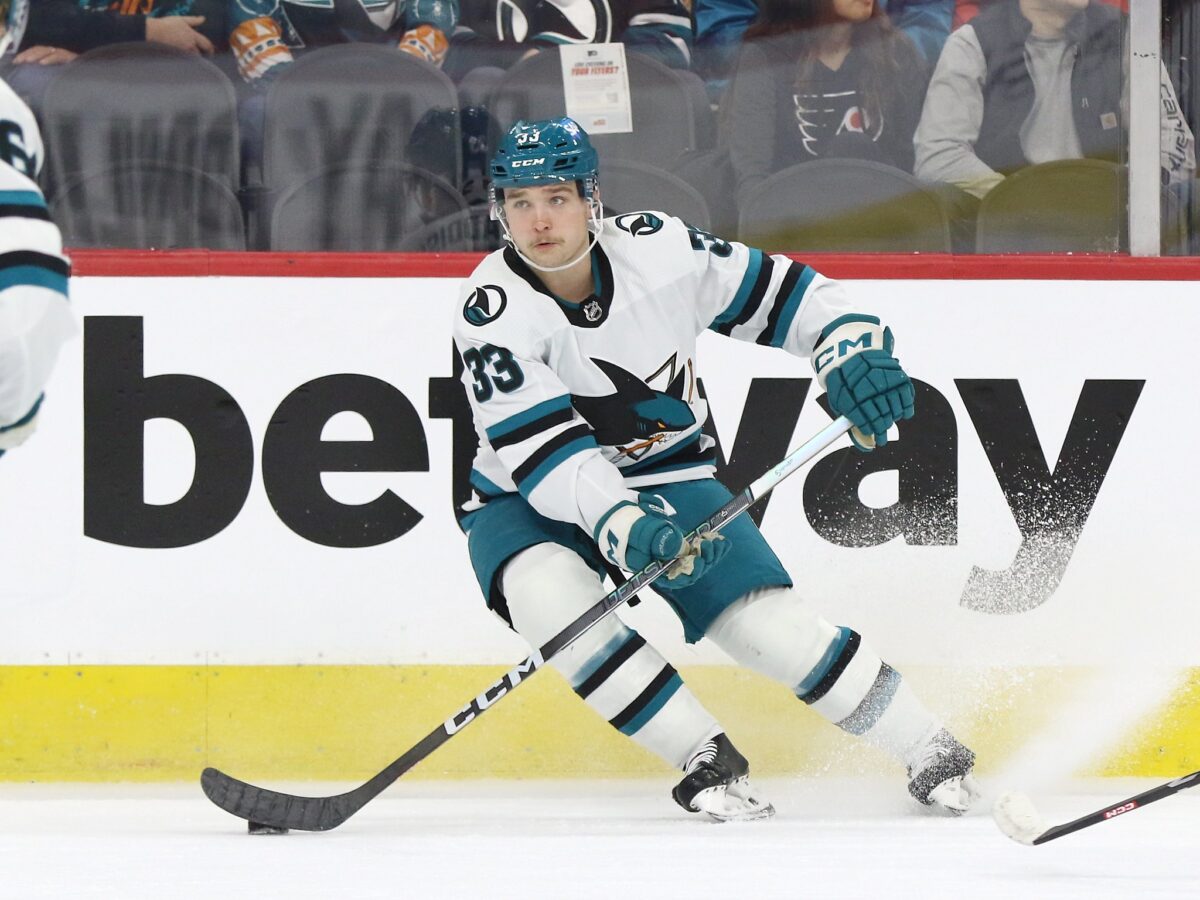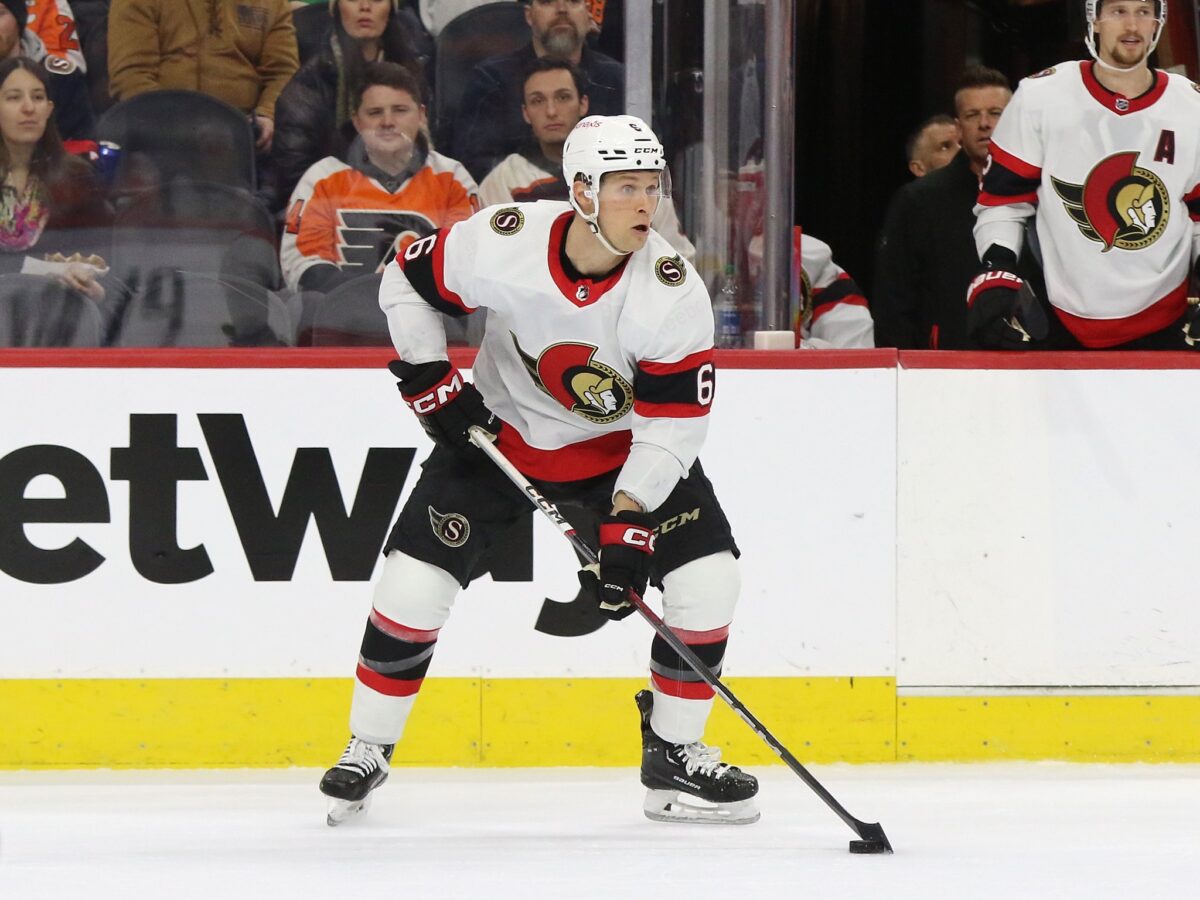With less than two weeks before training camp, the Ottawa Senators have nearly everything in place. The team’s goaltending is vastly improved, their top three lines are all but confirmed thanks to Josh Norris’ recovery progress, and even the defence looks much more solid than it has in previous seasons. The recent addition of Nick Cousins added even more experience and grit to the team’s bottom six, making them nearly look like a playoff team.
But general manager (GM) Steve Staios isn’t quite done tinkering, and on Sept. 5, the team invited Nikolay Kulemin and Calen Addison to training camp on professional tryout contracts (PTOs.) While most of the attention has been given to the 38-year-old Kulemin, the move is little more than a publicity stunt; he hasn’t played in the NHL since 2017-18 and hasn’t scored more than 16 goals in any league since 2010-11. His return is reminiscent of Theoren Fleury’s 2009 tryout with the Calgary Flames, which gave the aging star a fitting exit from the league.
The addition of Addison, however, is much more intriguing. The undersized defender was surprisingly not qualified by the San Jose Sharks, allowing him to become a free agent for the first time in his career. His 2023-24 season wasn’t great, but he’s only two seasons removed from a 29-point campaign. If he can stand out at the Senators’ training camp, he has the potential to give the Senators a significant boost on the blue line.
Addison Is a Dynamic Offensive Defender
When Addison was drafted in 2018, he was seen as a potential power-play quarterback thanks to his elite intelligence and mobility. Dobber Prospects’ writer Peter Harling wrote, “The right shot defenceman oozes hockey sense, is a precision passer and has a decent shot, but excels at creating transition offence and distributing the puck. Skating is an asset as he moves quickly, has good mobility and agility and strong edges.” His tool kit made him a projected fringe first-round pick despite standing just 5-foot-10. In the end, he fell to the Pittsburgh Penguins in the second round, 53rd overall, making him a potential steal of the draft.

Through his junior career, Addison remained one of the Western Hockey League’s (WHL) premier puck-moving defencemen. From 2015-20, he scored 215 points in 252 games with the Lethbridge Hurricanes, including back-to-back 65-point seasons in 2017-18 and 2018-19. At the 2020 World Junior Championship, he was Canada’s best defenceman with nine points in seven games and led all defencemen with eight assists en route to a gold medal. He made his pro debut the following season and continued to score at nearly a point-per-game pace in the American Hockey League (AHL), putting up 22 points in 33 games and earning a spot on the AHL’s All-Rookie Team while also appearing in three NHL games with the Minnesota Wild.
After tearing up the AHL again in 2021-22, Addison earned a regular spot on the Wild’s blue line for 2022-23, where he continued to put up points. In his first four games that season, he scored six points, and although his pace slowed down significantly over the course of the season, he still finished with 29 points in 62 games and earned a couple of votes for the 2022-23 All-Rookie Team.
There are concerns about his defensive game, and Addison’s stint with the Sharks amplified some already-present issues. He put up a minus-35 rating in 60 games while adding a goal and 11 points and sitting at a very sub-par 43.7 Corsi For Percentage (CF%). However, that appears to be more of a blip in his career than a new trend. In each of his previous three seasons with the Wild, his even-strength CF% sat over 51%, and his on-ice goals for per 60 minutes (oiGF/60) sat between three and five while his on-ice goals against per 60 minutes (oiGA/60) sat lower in all but 2021-22. Given that he’s 24 years old and San Jose was abysmal last season, there shouldn’t be cause for concern for his ability to develop into a high-end offensive defender.
The Senators Lost Two Good Puck Movers
Last season, the Senators had 12 players play more than 10 games and cross 50 CF%, two of whom were Jakob Chychrun and Erik Brannstrom. Like Addison, both had their respective issues; Chychrun could be a problem in his own end as shown by his 73 giveaways and a team-low minus-30 rating, while Brannstrom never developed into the high-end puck mover he was advertised to be when he arrived in 2018-19. But they could be trusted to gain possession of the puck and move it into the offensive end.

However, the Senators didn’t replace them with players who could be trusted to do the same. Nick Jensen, acquired for Chychrun from the Washington Capitals, has never had a CF% above 47.1. While he’s valued more for his defence than his abilities with the puck, he leaves the Senators with just three positive possession defenders. Brannstrom’s spot on the bottom pairing will likely go to Tyler Kleven, who had a 48.5 CF% last season over nine games, or Maxence Guenette, who had an even worse 45.9 CF% over seven appearances. That leaves Ottawa with just Jake Sanderson, Thomas Chabot, and Artem Zub as defencemen who can be reliably get the puck and hold onto it.
Of course, possession isn’t everything, and the reason Addison was traded in the first place was because the Wild were looking for a more reliable defensive presence on a blue line that already had several strong puck-movers in Jonas Brodin, Jared Spurgeon, and Brock Faber, who finished his rookie season with a 47.6 CF%. Despite sitting below the 50% mark, Faber was still a highly-impactful player for Minnesota and earned the second-most votes for the Calder Memorial Trophy as rookie of the year.
Related: Ottawa Senators’ 2024 Training Camp Battles to Watch
But teams that can control the puck more often than the opposition have a better chance to win, and there isn’t a better example than the Stanley Cup champion Florida Panthers. Of the 28 players who played at least a game with the Panthers in 2023-24, only six had CF% less than 50%, and six of their defencemen had scores above 53% while playing at least 50 games, including shutdown defender Gustav Forsling. Once Florida got the puck, they didn’t let it go, which played a significant part in their first Cup in franchise history.
Is Addison Just Brannstom 2.0?
There are, unfortunately, several parallels between Addison and the recently-departed Brannstrom, another small, offensive defenceman who struggled to fit in with the Senators. There’s even an argument that Brannstrom is the better of the two; he had three more points while averaging less ice time, had fewer goals against while on the ice, and although neither player is overly physical, the Senators’ defender blocked 111 shots last season compared to Addison’s 83.
Given those stats, it bears asking – is Addison just a Brannstrom replacement? The Senators already showed they don’t want that kind of player on their team when they didn’t re-sign him this offseason and he moved on to the Colorado Avalanche. But there’s a significant difference between the two, and that’s expectation. When Brannstrom arrived, he was lauded with praise from former GM Pierre Dorion, who famously said it was his proudest day as a GM. The Senators then proceeded to give him limited minutes and defensive responsibilities, forcing him to become a reliable, bottom-pairing defender in spite of his dynamic skillset. He performed his new job admirably, but his trajectory was ruined by Ottawa’s usage of him.
Addison, on the other hand, hasn’t been subjected to the same immense pressure and instead been allowed to mostly play the game he is good at, which is as a power-play quarterback and a reliable puck distributor on the right side. While it’s difficult to see him replacing either Sanderson or Chabot on the two power play units, he could certainly usurp Jacob Bernard-Docker, who has not had the development that many expected. Despite being advertised as a shutdown defender, he had a 3.7 oiGA/60 and a 2.4 oiGF/60 last season, while Addison had an average of 3.3 and 2.5, respectively. Bernard-Docker also had a disappointing 44.1 CF%. Given Addison’s high-end mobility, he could have a leg up on the third pairing.
No Guarantees with a Tryout
Maybe the best thing about bringing in Addison is that he’s just on a PTO. Staios recognized that the Senators’ defence could use an improvement or two, but he didn’t commit to the young defender in case he proved to not be a great fit. It’s a stark contrast to last season, where there were no real chances for training camp battles because the team had no room to add another salary to the books. That was bad news for Guenette, who earned a spot out of camp but had to go back to the AHL because there was no room for him. The Senators are still tight to the cap ceiling ahead of 2024-25, but they have some wiggle room to allow for potential improvements, and that’s a step in the right direction.
